What is Keyword Stuffing? How to Avoid Doing SEO Like It’s 2005
Back in the early 2000s, keyword stuffing actually worked. All you had to do was repeat the same phrases, and you could rank pretty well. (Readability be damned.) I’m not exaggerating here — these sites were literally littered with...

Back in the early 2000s, keyword stuffing actually worked.
All you had to do was repeat the same phrases, and you could rank pretty well.
(Readability be damned.)
I’m not exaggerating here — these sites were literally littered with keywords.
Like this one from 2005.

Yes, this is a real site I found on The Wayback Machine.
And yes, “online casinos” was used enough times to make your eyes burn.
But that game is over.
Today, keyword stuffing makes your content unreadable and unrankable.
Google’s smarter. Users are pickier. And spammy tactics? They get flagged fast.
So, if you’re still stuffing keywords, you’re not just stuck in the past — you’re tanking your chances of ranking.
In this guide, you’ll learn:
What keyword stuffing looks like How it harms your SEO and credibility How to use keywords naturally to boost rankings and readabilityLet’s start by examining how this tactic works and its rise to popularity.
What Is Keyword Stuffing?
Keyword stuffing is the practice of overloading your content with target keywords in an unnatural way to manipulate search rankings.
It’s considered a black hat SEO tactic, meaning it goes against Google’s guidelines and puts your site at risk.
So, what does it look like?
Here’s a keyword stuffing example straight from Google:

No one talks like that.
And no one wants to read it, either.
You might think that SEO keyword stuffing only happens in blog content or sales copy.
But it shows up in other places, too:
Headings and subheadings Meta titles and descriptions Anchor text Navigation menus Page footers URLs
Wherever it appears, the result is the same: stiff, awkward content that adds no value for the reader.
Google also considers the following to be keyword stuffing:
Lists of phone numbers with no context or purpose Blocks of cities or regions to manipulate local rankingsLike this:
Then, there’s invisible keyword stuffing — which is exactly what it sounds like.
You don’t see it, but search engines do.
Some common examples:
White text on a white background Text hidden behind an image Fonts set to 1px or less Keywords in HTML comments Hyperlinking just one character (like a period or dash) Alt text loaded with unrelated keywords
So, how did keyword stuffing become so widespread in the first place?
Let’s take a quick look back.
History of Keyword Stuffing
Back when E-E-A-T was just a gleam in Google’s eye, keyword stuffing reigned supreme.
Why?
Because early search engine algorithms relied heavily on keyword density to determine relevance.
The more times a keyword appeared on a page, the more relevant that page seemed to search engines.
For example, here’s another site I found on the Wayback Machine — this one from 2002.
As you can see, they used various tactics to manipulate their rankings.
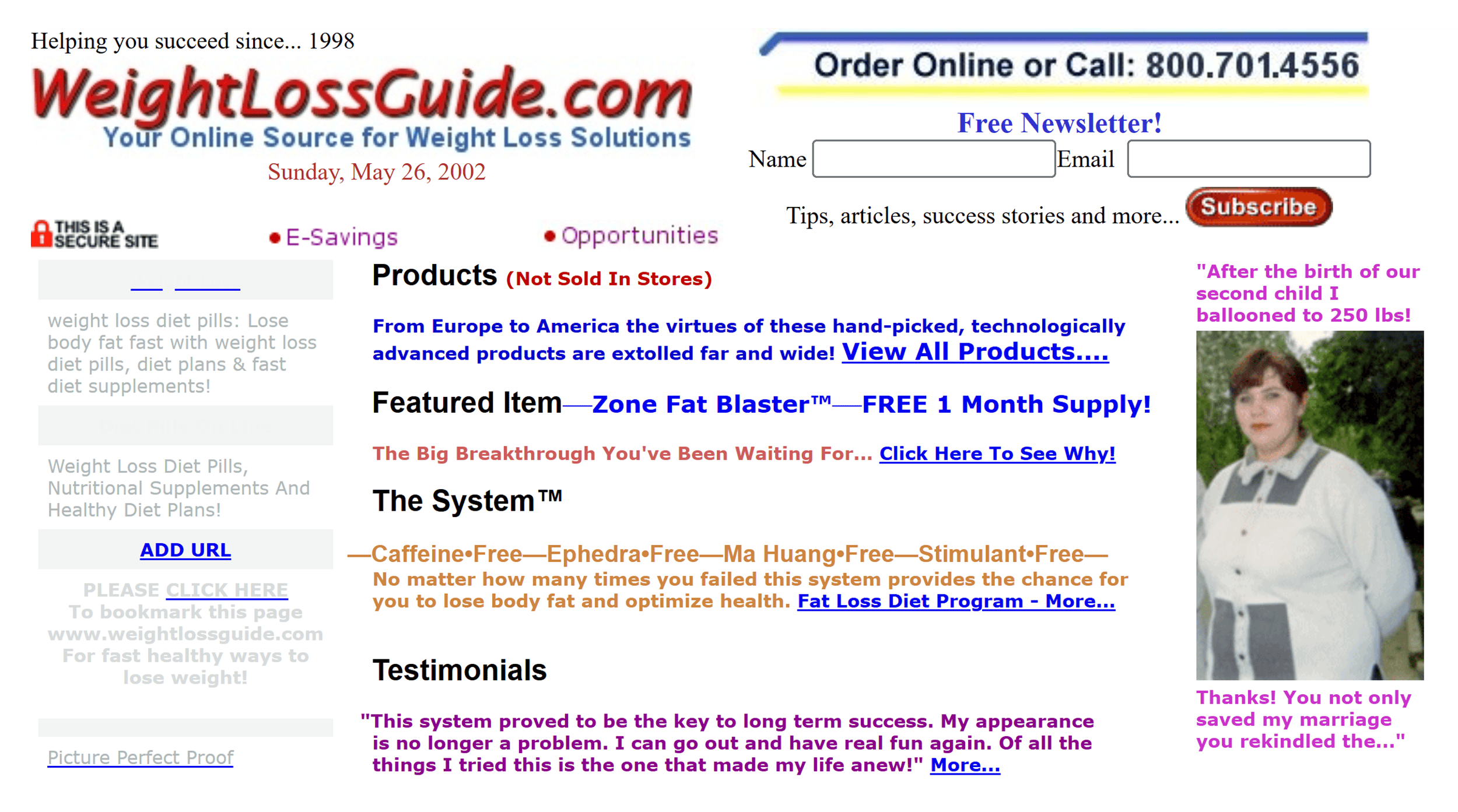
Like blatantly adding a bunch of keywords into content blocks on their homepage.
I’m guessing this site sold “weight loss diet pills,” but I can’t be sure.

They also loaded their product pages with back-to-back keywords.
Like “antidepressants and antiaging supplements.”
(And made a bunch of bold medical claims without citing or linking to reputable sources.)
No E-E-A-T here, that’s for sure.

Thankfully, Google got smarter — and more serious about quality.
Over time, it rolled out various updates to detect manipulative tactics.
And rewarded content that actually helped users and met search intent.
This made it harder to cheat the system and easier for Google to flag spammy, keyword-packed content.
But it hasn’t stopped all site owners from engaging in this practice.
So, if your content reads like it was written for bots, don’t be surprised when Google treats it like spam.
How Keyword Stuffing Hurts Your Site
Using keywords is important for relevance.
But overusing them?
It carries more risk than you might realize.
Google Penalties
If Google detects keyword stuffing, it may lower your rankings or trigger a manual action.
Even worse, you may be wiped off the SERPs completely.
Google warns about this in its spam policies:
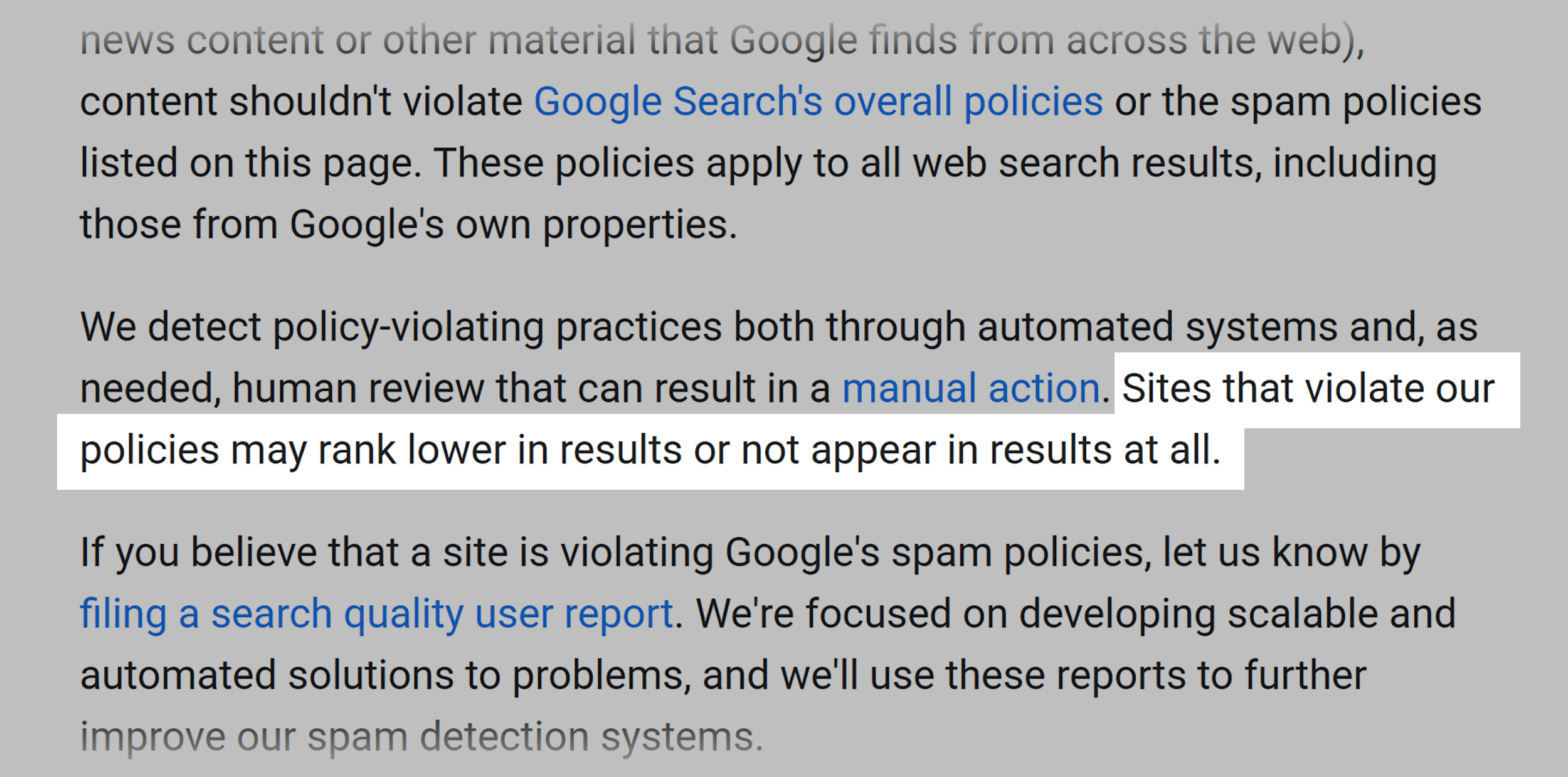
Recovery can take months of hard work.
And some sites never fully recover their rankings.
Poor User Experience
Even if you escape Google’s penalties, keyword-stuffed content creates a terrible user experience.
Users who land on these pages typically:
Leave immediately (increasing bounce rate) Spend less time on page Rarely convert Never return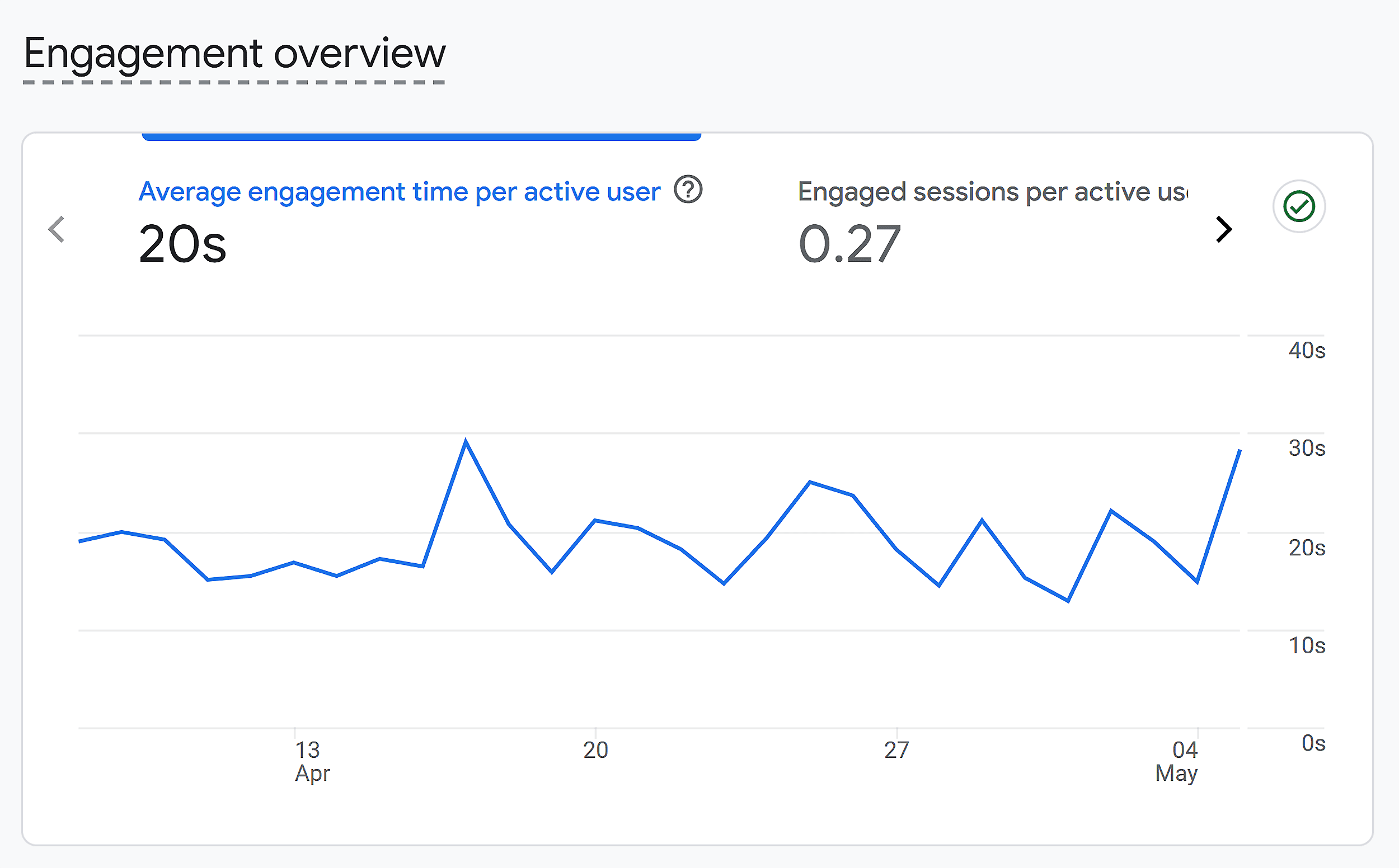
These negative engagement signals harm your overall site performance, too.
Damaged Brand Reputation
Keyword-heavy content can make your site appear spammy and unprofessional.
It signals to users that you’re more concerned with manipulating search engines than providing value.

This damages trust – the foundation of any successful brand.
Once users and search engines label your site as “spammy,” rebuilding that trust becomes difficult.
Lower Rankings
The ultimate irony of keyword stuffing?
It’s likely to achieve the opposite of its intended purpose.
Instead of boosting your rankings, it can make them plummet.
Today’s search algorithms prioritize:
Relevant, natural content Positive user engagement signals Valuable information that satisfies search intentAs Google says:
How to Identify Keyword Stuffing on Your Site
Not sure if your content crosses the line from optimized to overkill?
Here’s how to spot keyword stuffing before Google and your readers do.
Manual Calculation
Old-school, but it works:
 Count how many times your target keyword appears in your content
Divide by your total word count
Multiply by 100 to get the percentage
Count how many times your target keyword appears in your content
Divide by your total word count
Multiply by 100 to get the percentage
So, how do you know if your percentage is “good” or “bad”?
Keep in mind that the ideal keyword density doesn’t exist.
As Leigh McKenzie, Backlinko’s head of SEO, says:
Manual Assessment
One of the most effective ways to identify keyword-heavy content is to read it aloud.
If something feels stiff, repetitive, or robotic, your readers will feel it, too.
Ask yourself:
Would I write this way if SEO wasn’t a factor? Does this content feel valuable and informative? Would real people enjoy reading this?If the answer to any of these questions is “no,” it’s time to revise.
WordPress Plugins
Using WordPress?
Plugins like Yoast SEO and Rank Math can help flag potential keyword stuffing.
These tools provide readability scores and keyword density calculations.
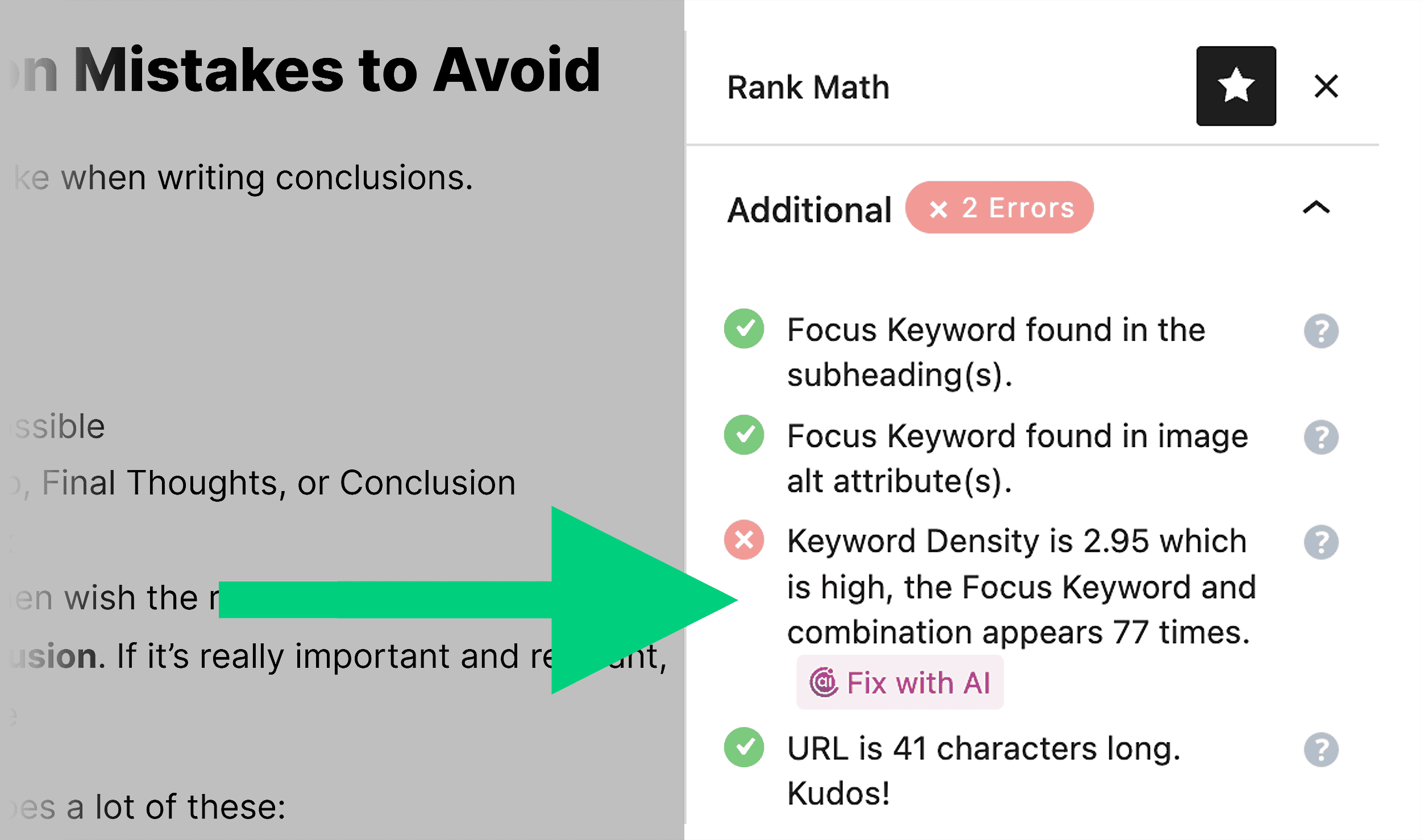
But keep in mind that these tools may miss subtle issues.
And typically won’t flag anything until it’s really obvious.
So, it’s best to use them as a guide rather than a final verdict.
On Page SEO Checker
Want a smarter, more in-depth look at keyword usage on your pages?
Use Semrush’s On Page SEO Checker.
Instead of manually scanning your content, this tool benchmarks your keyword usage against top-ranking competitors.
Here’s how to use it:
Enter your domain into the tool and press “Get ideas.”
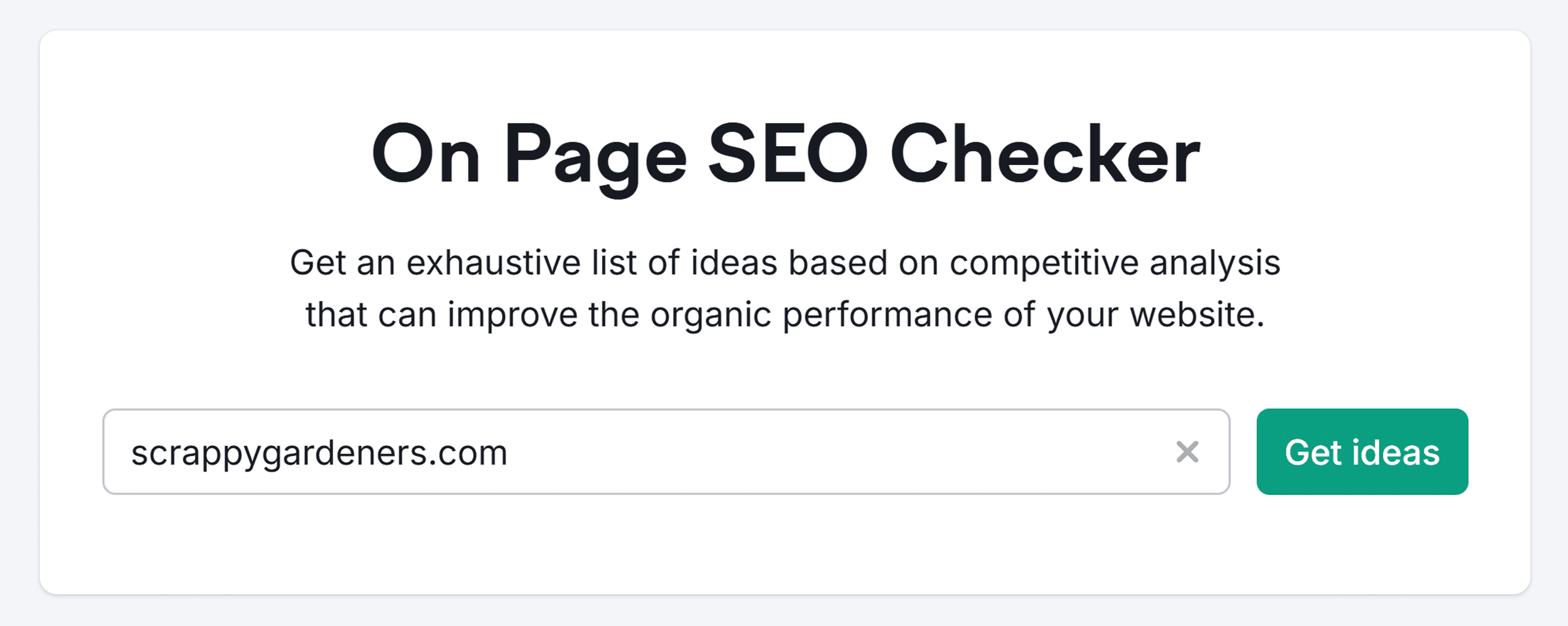
Next, configure your settings.
(It’ll ask you to choose your location and preferred pages to analyze.)
When your report is ready, scroll to the “Top pages to optimize” section.
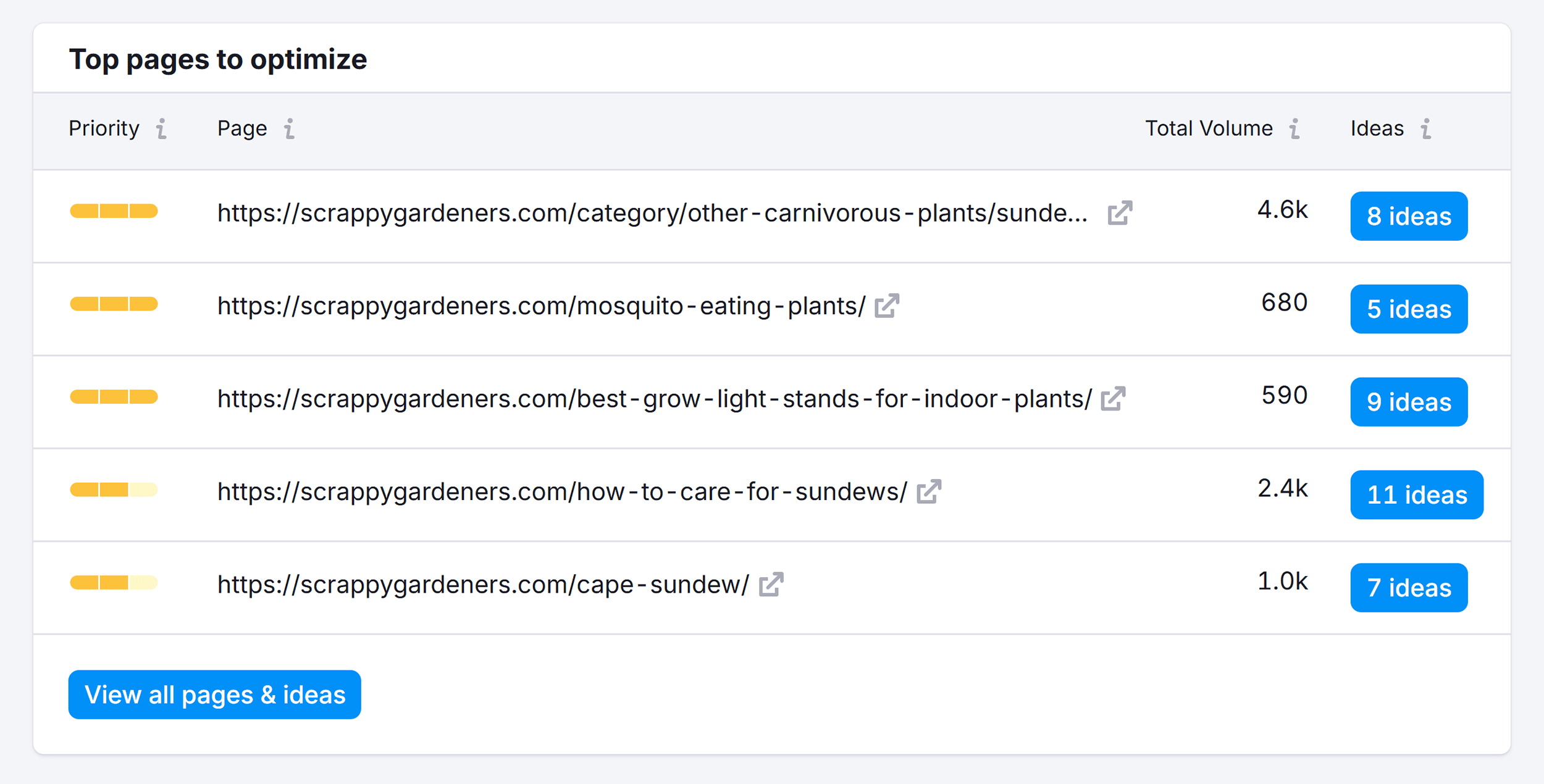
Click the blue “# Ideas” button next to any page to view detailed recommendations.
If keyword stuffing is detected, the On Page SEO Checker will call it out.
And show you exactly where the issue is.
Including the body content, meta tags, or headings.
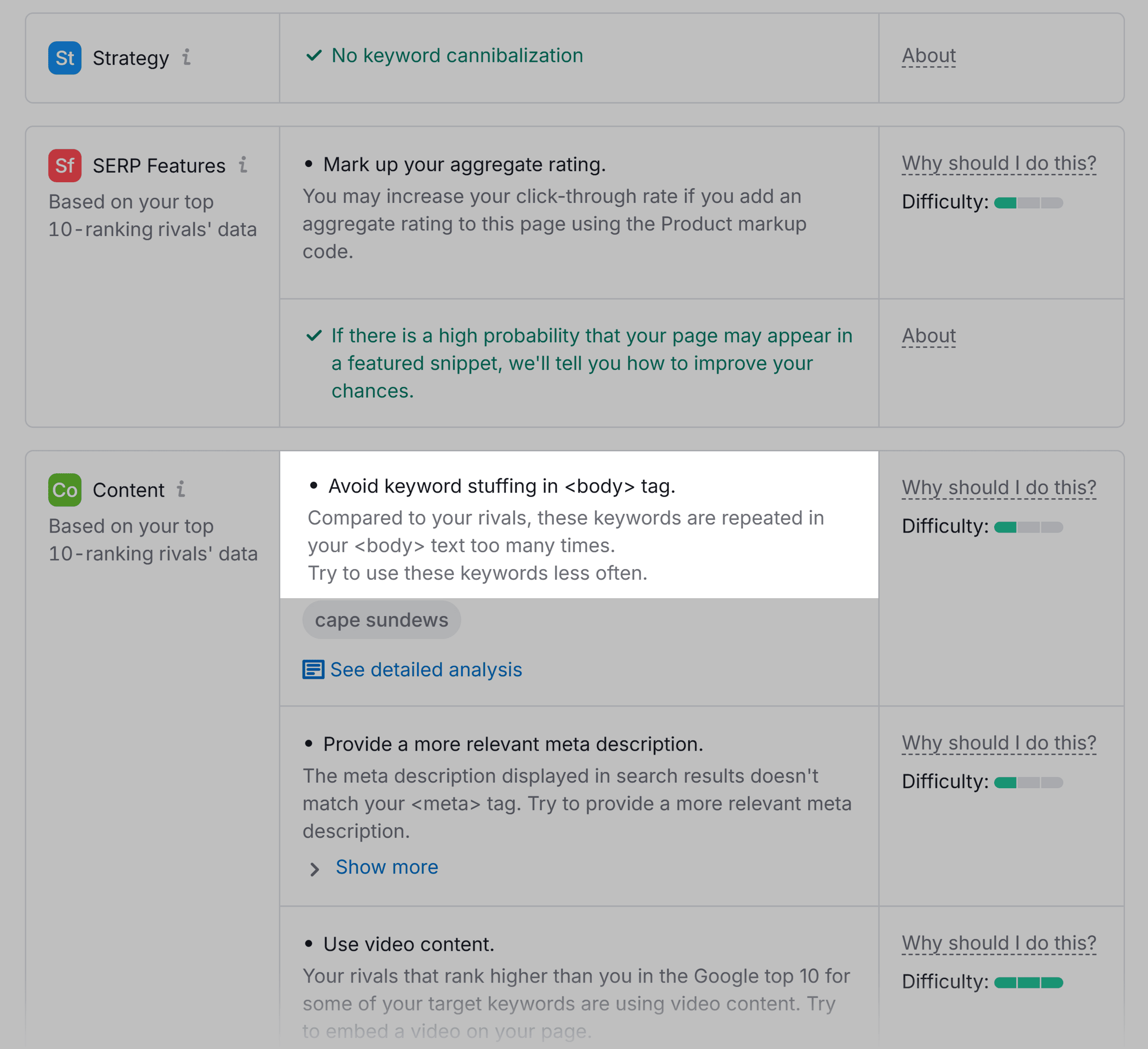
If your keyword usage is clean, you’ll see notes like:
“No keyword stuffing detected in <h1> tag.”
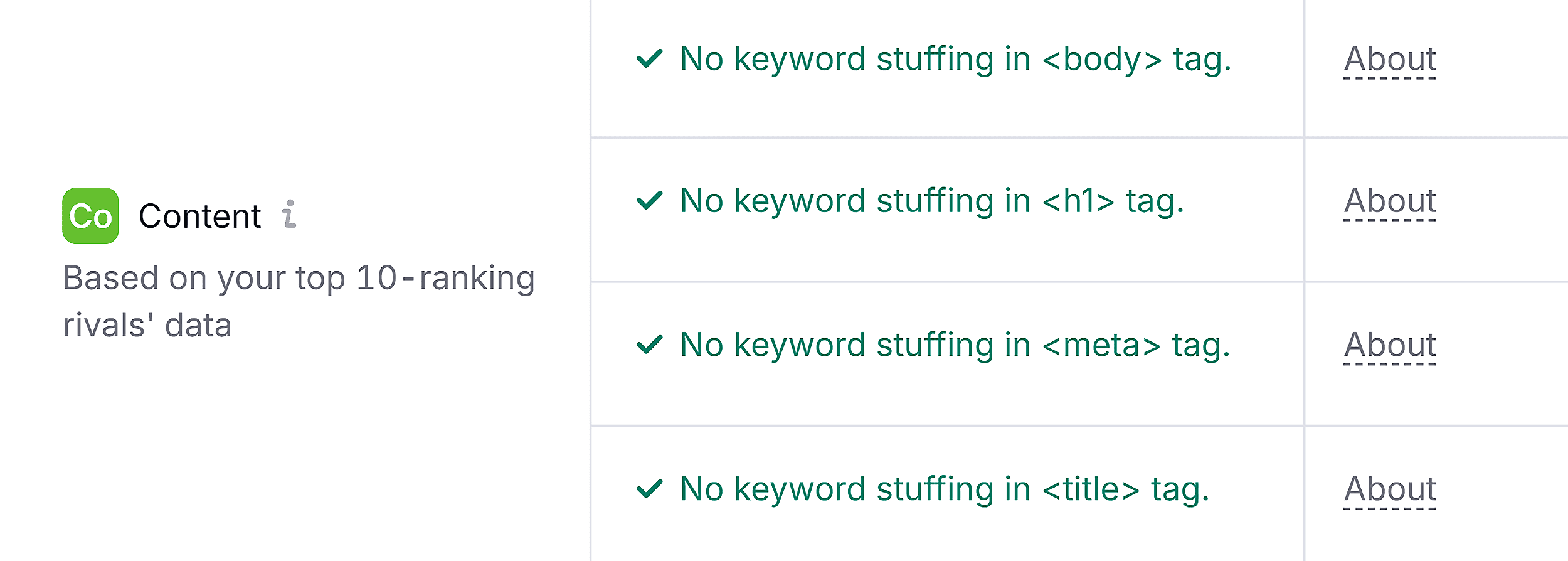
You’ll also get recommendations for:
Additional keywords to include SERP feature opportunities Internal linking suggestions Cannibalization issues Backlink ideas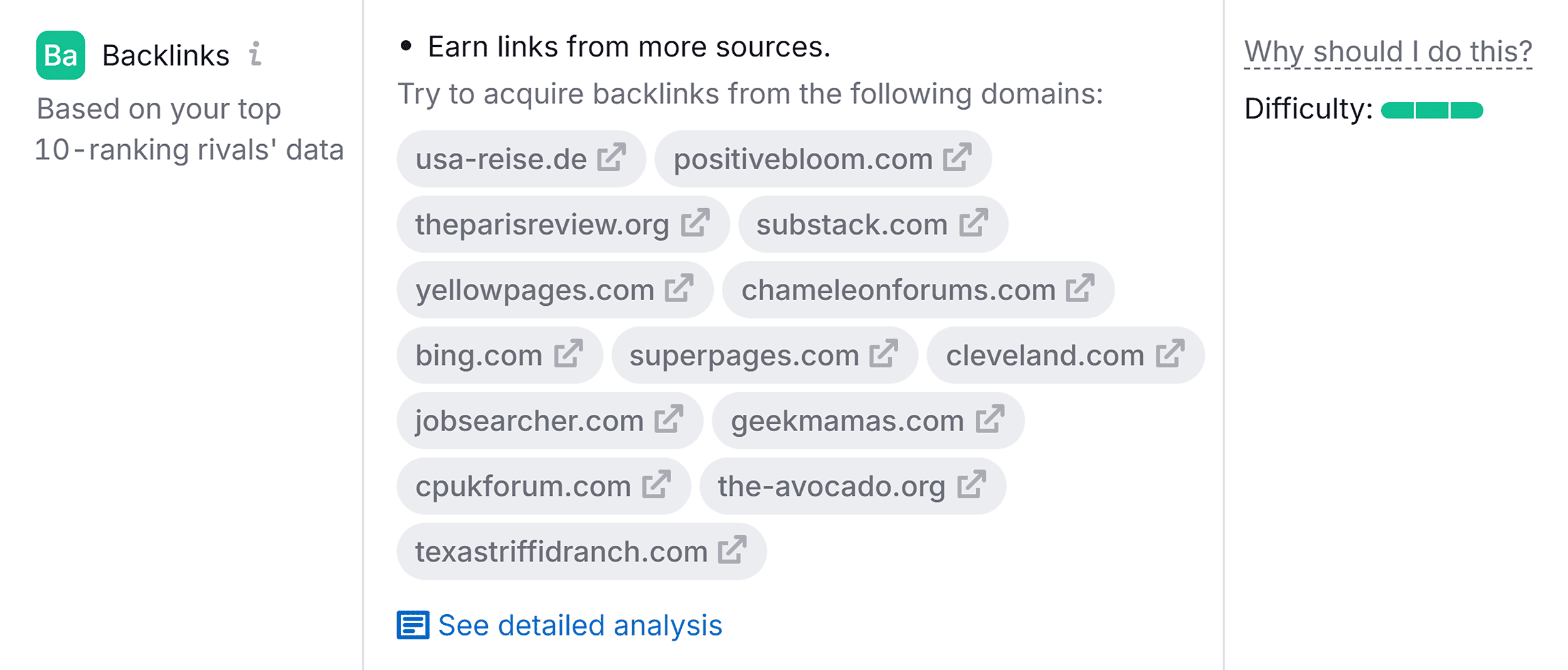
Use the recommendations to create higher-ranking content that search engines and readers love.
6 Keyword Optimization Best Practices
So, how do you avoid keyword stuffing?
And still optimize your content without sounding like a broken record?
Here are some do’s (and a few don’ts) to help you strike the right balance.
1. Write for Humans, Not Search Engines
Keyword density isn’t a ranking factor.
So, don’t worry about hitting a specific number.
Focus on creating helpful content instead.
Answer your audience’s questions. Solve their problems. And satisfy their search intent.
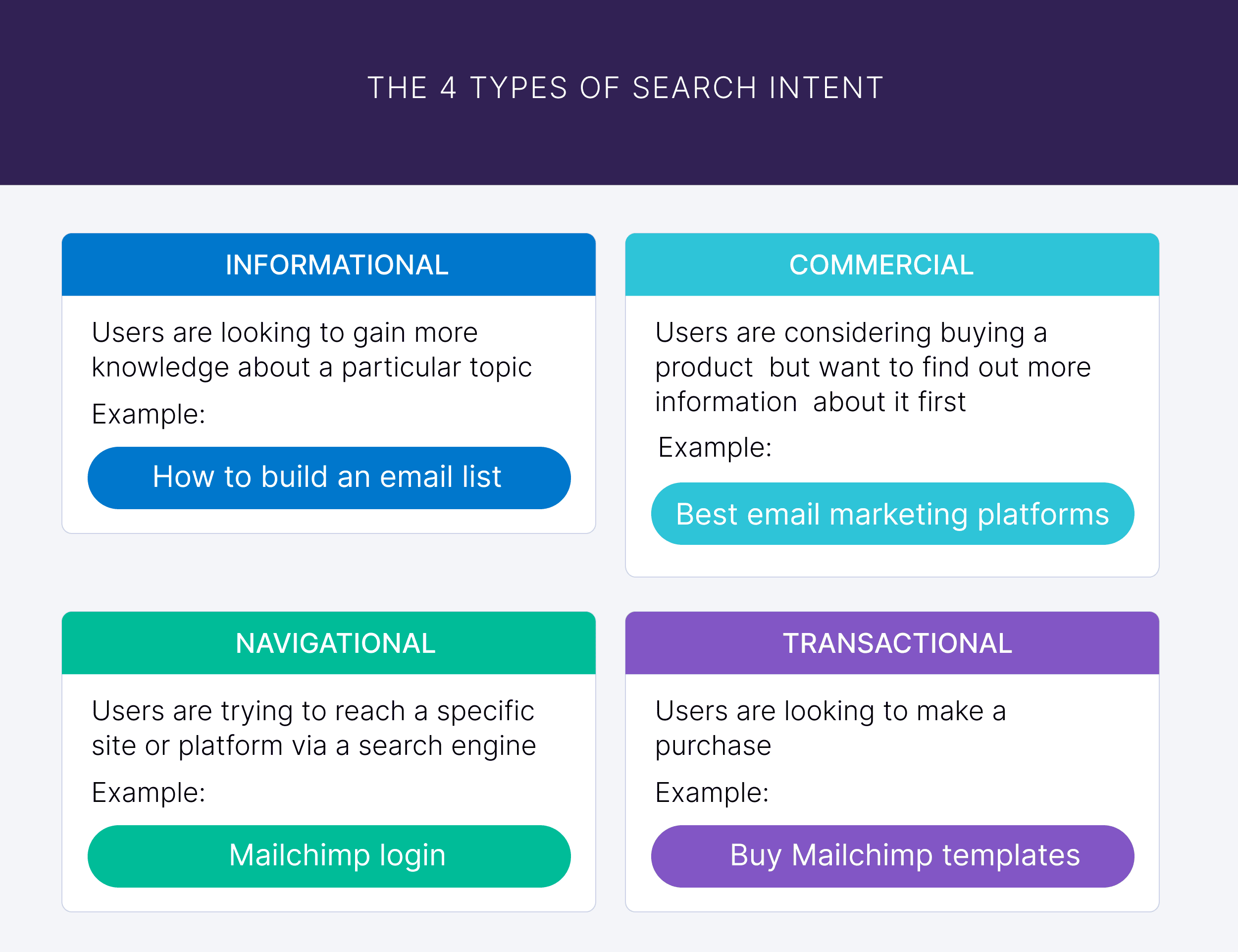
Google calls this people-first content — content made for readers, not algorithms.
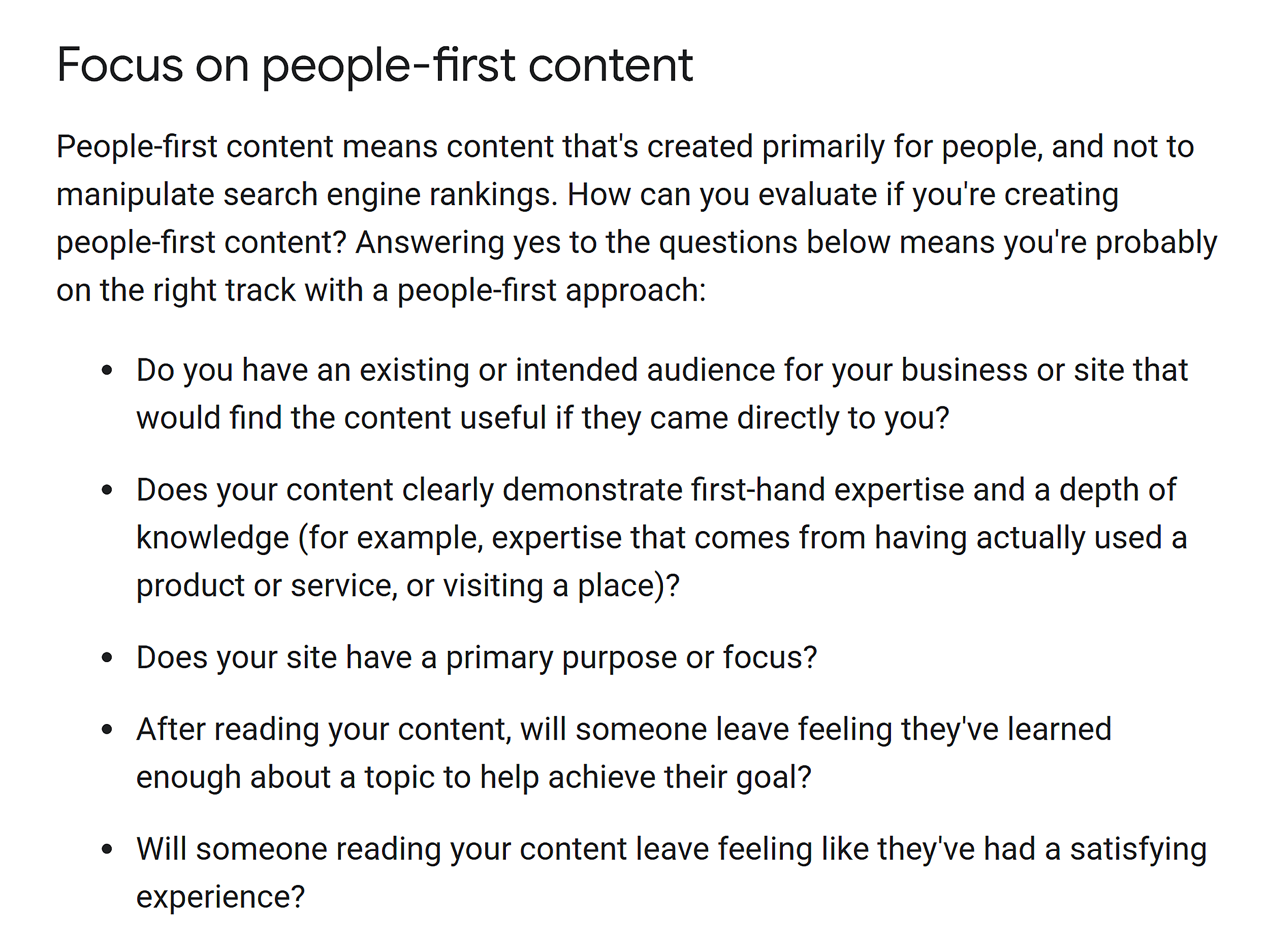
Yes, you should use your target keywords.
But if you’re covering the topic thoroughly, they’ll appear naturally.
For example, if you’re writing about meal prep for beginners, you’ll probably mention:
Easy meal prep Weekly food planning Healthy lunch ideasNo keyword stuffing required.
Bottom line: If your content reads well out loud and actually helps someone, you’re on the right track.
2. Include Keywords in Key Elements
You don’t need to repeat your keyword 55 times.
But placing it in a few prominent spots helps Google (and readers) understand what your page is about:
URL H1 First paragraph Subheadings (minimally — mix it up with keyword variations) Title tag Meta description Alt textAlways prioritize natural language over forced keyword insertion.
3. Use Secondary and Semantic Keywords
Secondary and semantic keywords make your content more engaging.
They also make it easier for Google to understand what your content is about.
Secondary keywords are terms that are closely related to your primary keyword.
They help your content rank for a broader range of relevant searches.
For example, if your primary keyword is “vegetarian recipes,” secondary keywords would include:
Vegetarian meal ideas Meatless recipes Vegetarian dinner recipesKeyword research tools like Semrush, Ahrefs, Moz, and others let you find secondary keywords.
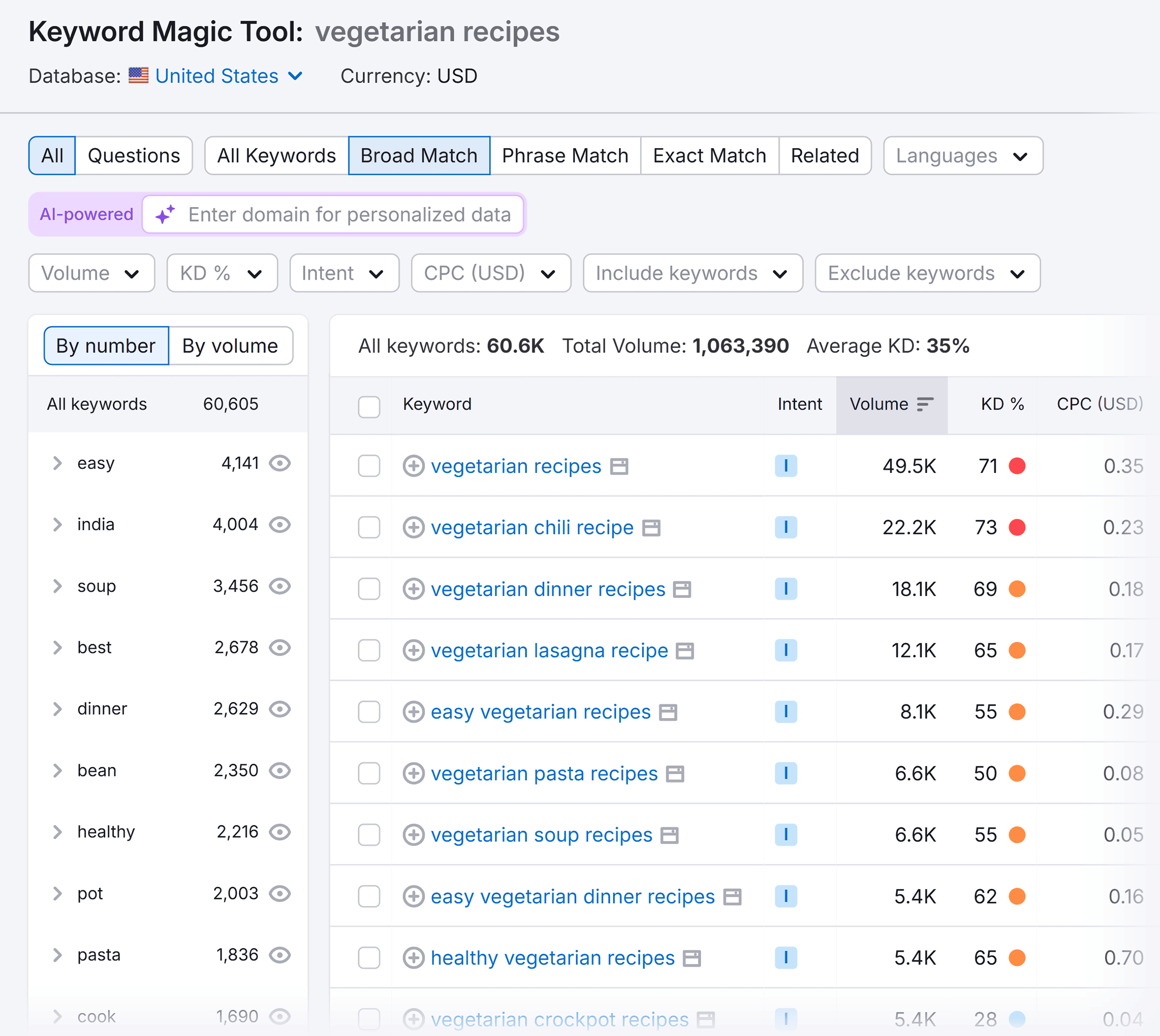
Semantic keywords are contextually related words and phrases that help search engines understand the meaning behind your content.
These terms aren’t direct matches or synonyms.
For a vegetarian recipe article, semantic keywords would be “veggie burgers,” “tofu,” and “vegetarian chili.”
You’re likely to include these terms naturally.
But Google can also help.
Conduct a search for your primary keyword and check “People Also Ask” and “Related Searches” for ideas.
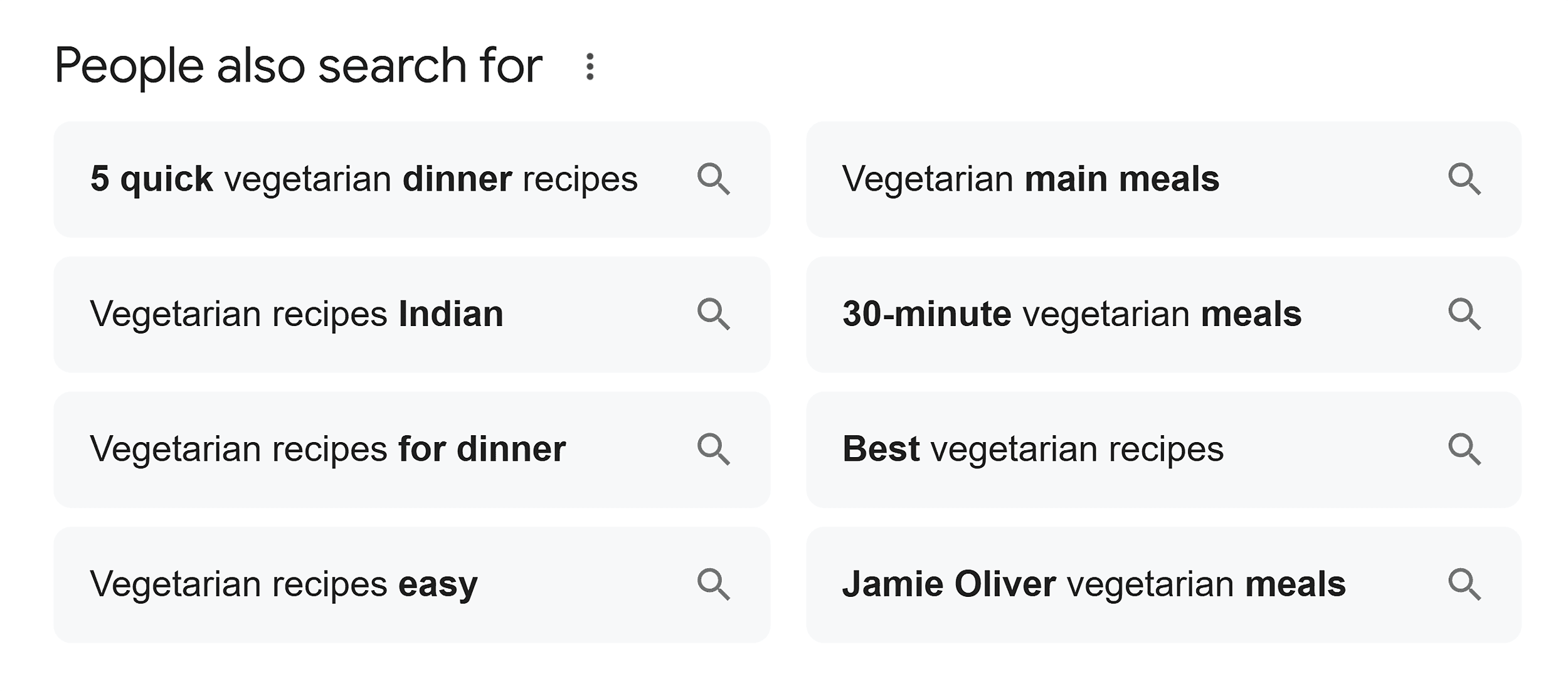
4. Avoid Irrelevant Keywords
Targeting irrelevant keywords won’t trick Google.
It’ll just confuse your audience — and dilute your topical authority.
For example, if your blog niche is fitness, don’t target irrelevant keywords like “top vacuum cleaners” or “best mattress.”
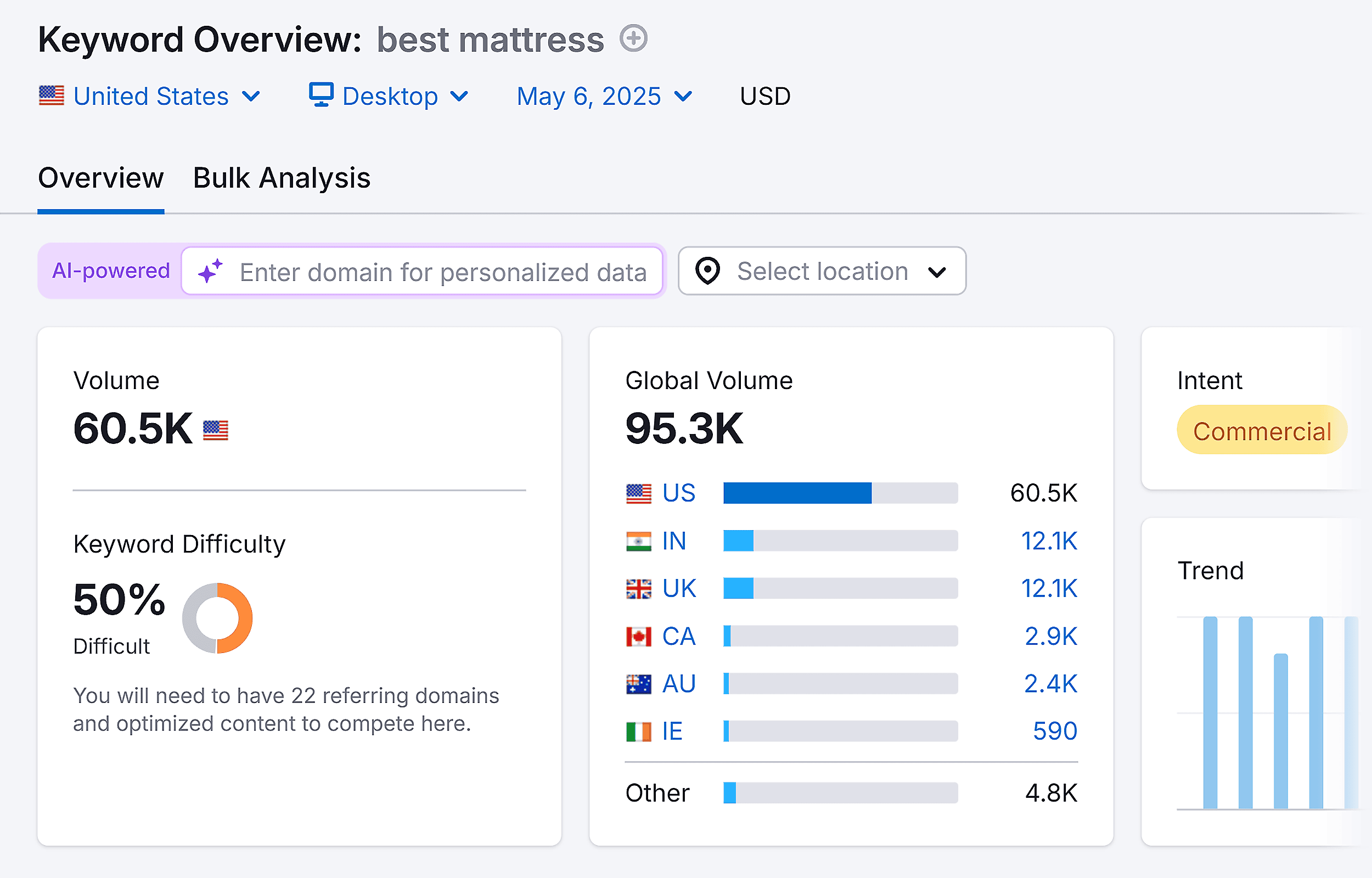
Even if you’re actually able to rank for these terms, it’s unlikely to do you any good past a bump in vanity metrics.
Aka — you might get clicks, but you won’t get conversions.
Plus, you’ll send confusing signals to Google about your site’s core purpose.
5. Don’t Use Grammatically Incorrect Keywords
During keyword research, you’ll inevitably run into terms that are misspelled yet somehow still get thousands of searches.
For example, “morgage calculator” gets 27,100 searches per month.
And “best morgage rates” gets 14,800.
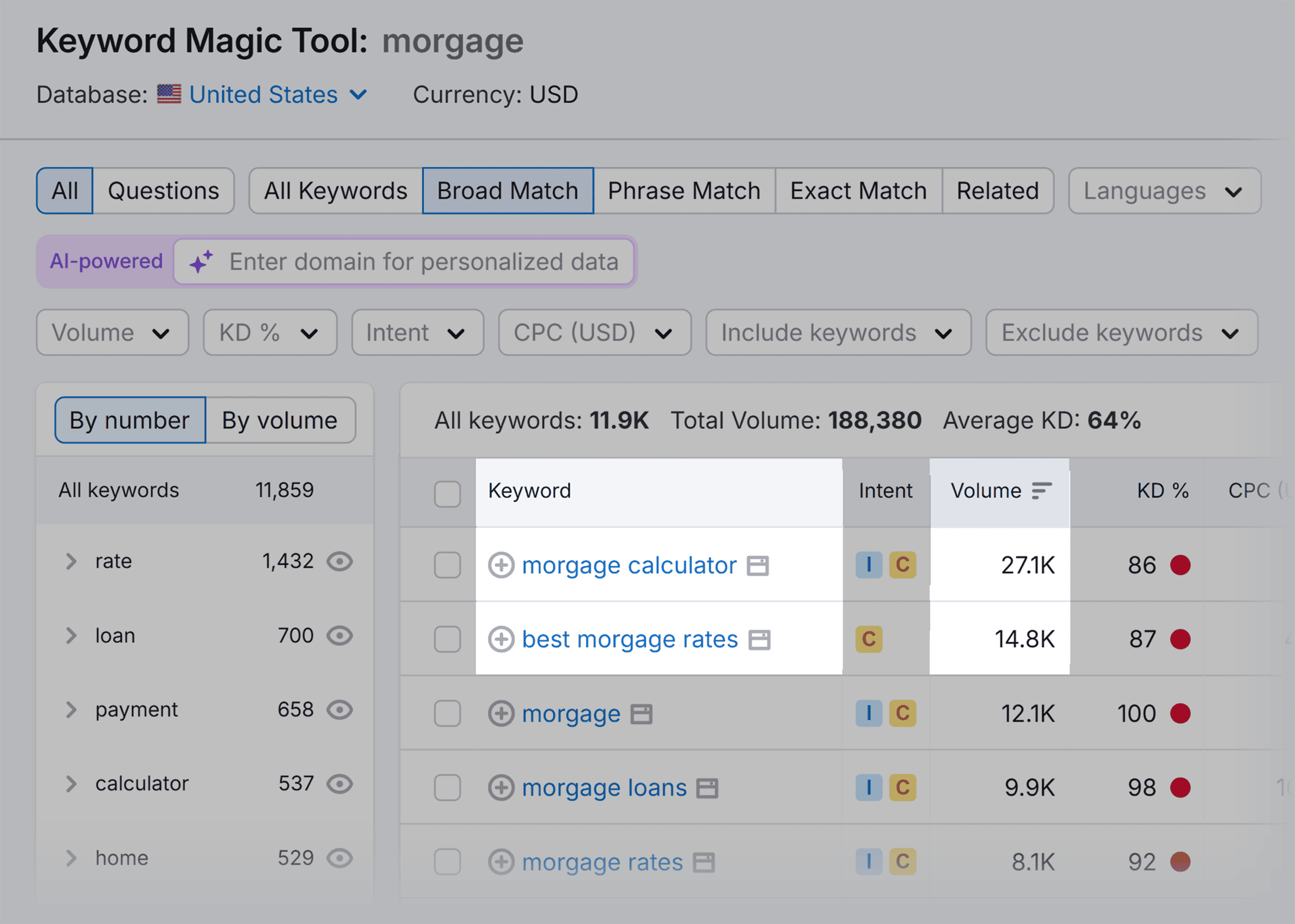
But using misspelled keywords isn’t worth the risk.
They make your writing less credible and can make your site look spammy.
Search engines are smart enough to know what users actually mean when they search for “morgage” instead of “mortgage.”
As Google says:
Same goes for grammatically incorrect or just plain awkward keyword phrasing like:
“Running shoes cheap” “How to train dog fast”Yes, people search like this:
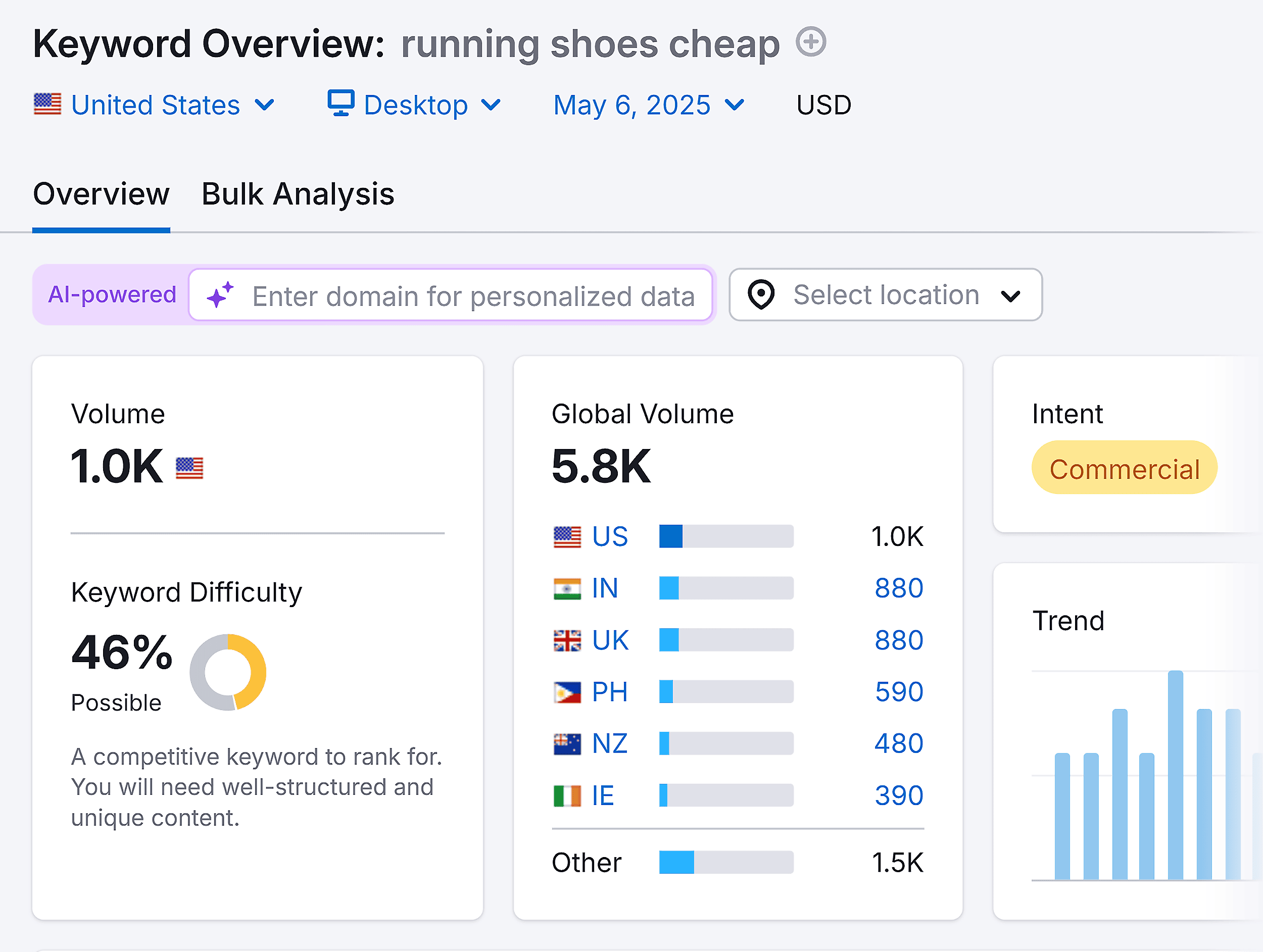
But you shouldn’t mirror that phrasing word-for-word.
Or you risk lowering the readability and trustworthiness of your content.
6. Spread Out Keyword Usage
Don’t use a bunch of keywords in a single paragraph or section.

Distribute them naturally throughout your content, from the introduction to the conclusion.
This creates a more cohesive piece that flows naturally while still signaling relevance to search engines.
How to Recover from Keyword Stuffing Penalties
Worried your rankings declined from excessive keyword usage? Don’t panic.
Recovery is possible with the right approach.
Check for a Manual Penalty in Google Search Console
First things first: confirm whether you’ve received a manual penalty.
Log into Google Search Console (GSC) and follow this path:
“Security & Manual Actions” > “Manual Actions.”
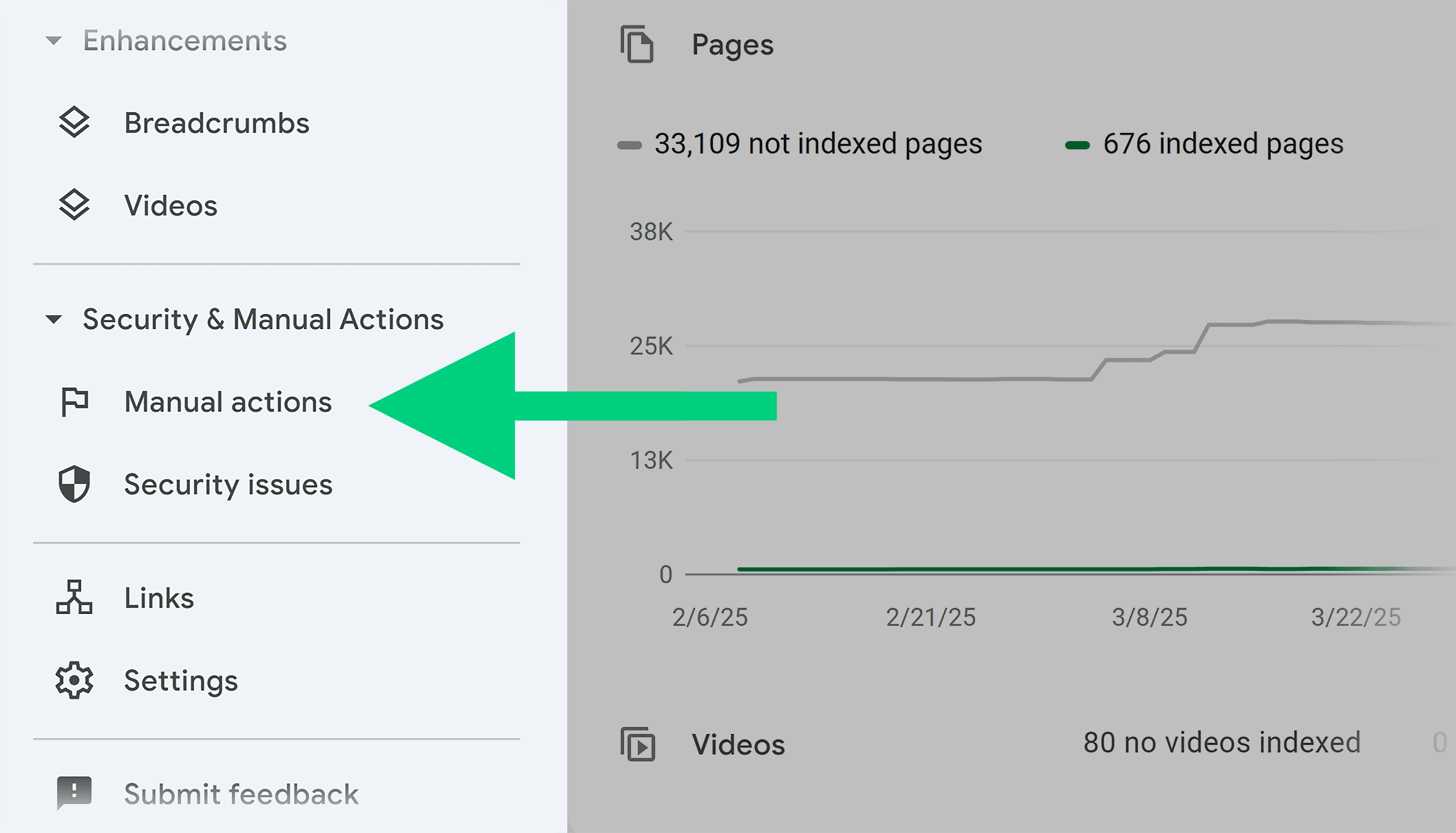
If you don’t have any manual actions, you’ll see this message:

If you have a manual action, you’ll see a report with the number of issues detected.
And a description of each one.
Like unnatural links, cloaking, thin content, and — you guessed it — keyword stuffing.
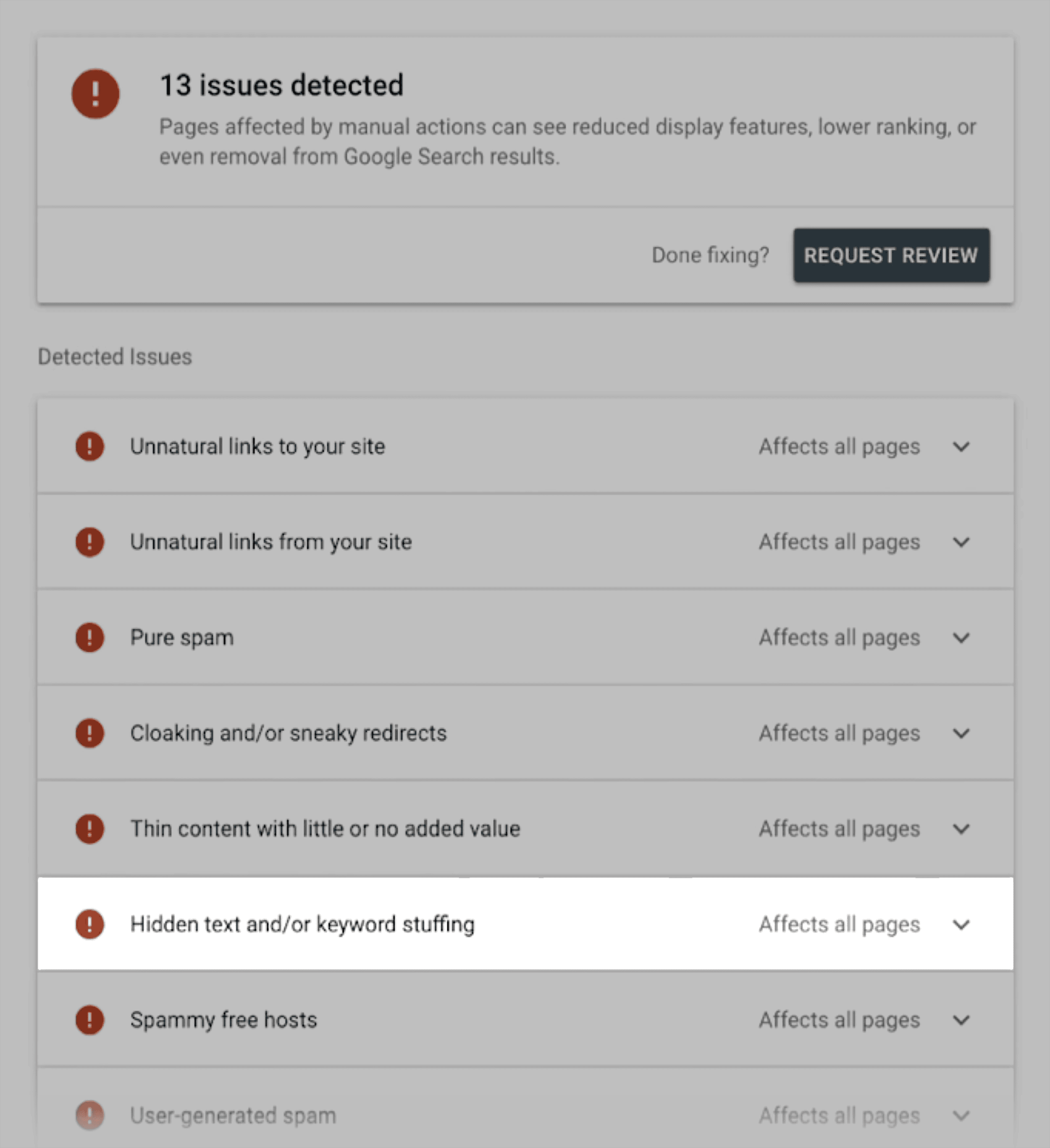
If you received a penalty, you’ll need to address the issues and submit a reconsideration request.
Fix the Issues
Once you’ve identified the problem pages, it’s time for cleanup.
But this isn’t just about fixing one page. It’s about showing Google you’ve changed your approach.
Here’s what to focus on:
Rewrite keyword-stuffed content: Focus on clarity, depth, and user intent. Cut repetition and use natural phrasing and keyword variations. Remove hidden keywords: If you used any black hat tactics, such as white text on white backgrounds, keyword-stuffed alt tags, or hidden links, remove them from your site Upgrade the content: Check that each page meets search intent, thoroughly covers the topic, has meaningful information gain, and includes E-E-A-T signals. Like high-quality sources, author expertise, and expert insights. Audit your site: For best results, consider following the above steps for every page on your site (if possible) — not just the ones Google flagged. This may improve your chances of getting the penalty removed.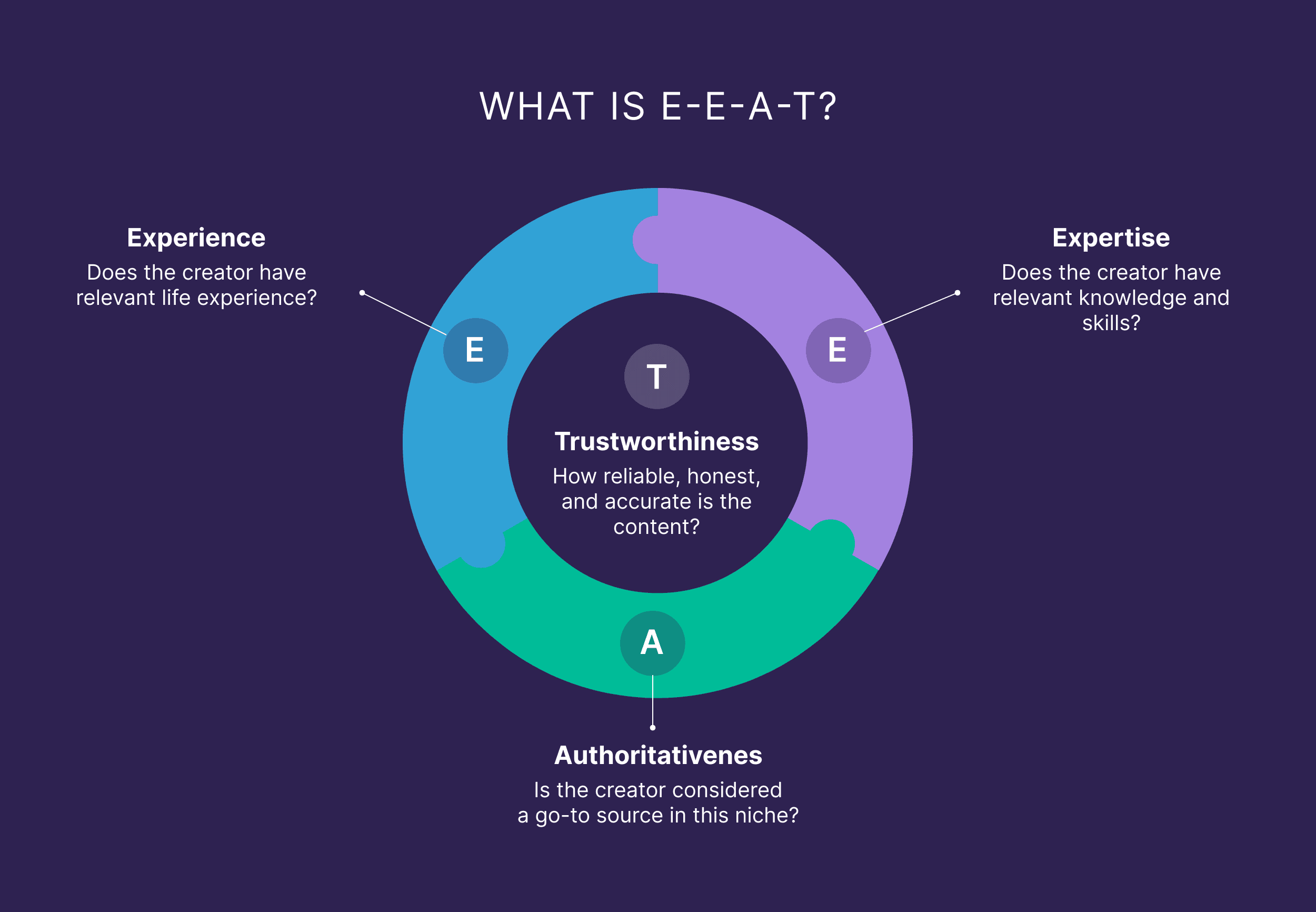
Request a Review
Once your content is cleaned up, go back to Search Console and follow these steps:
Open the “Manual Actions” section and click “Request Review.”

Next, you’ll be asked to check a box confirming you fixed all of the issues.
You’ll also need to explain what you fixed and how you did it.
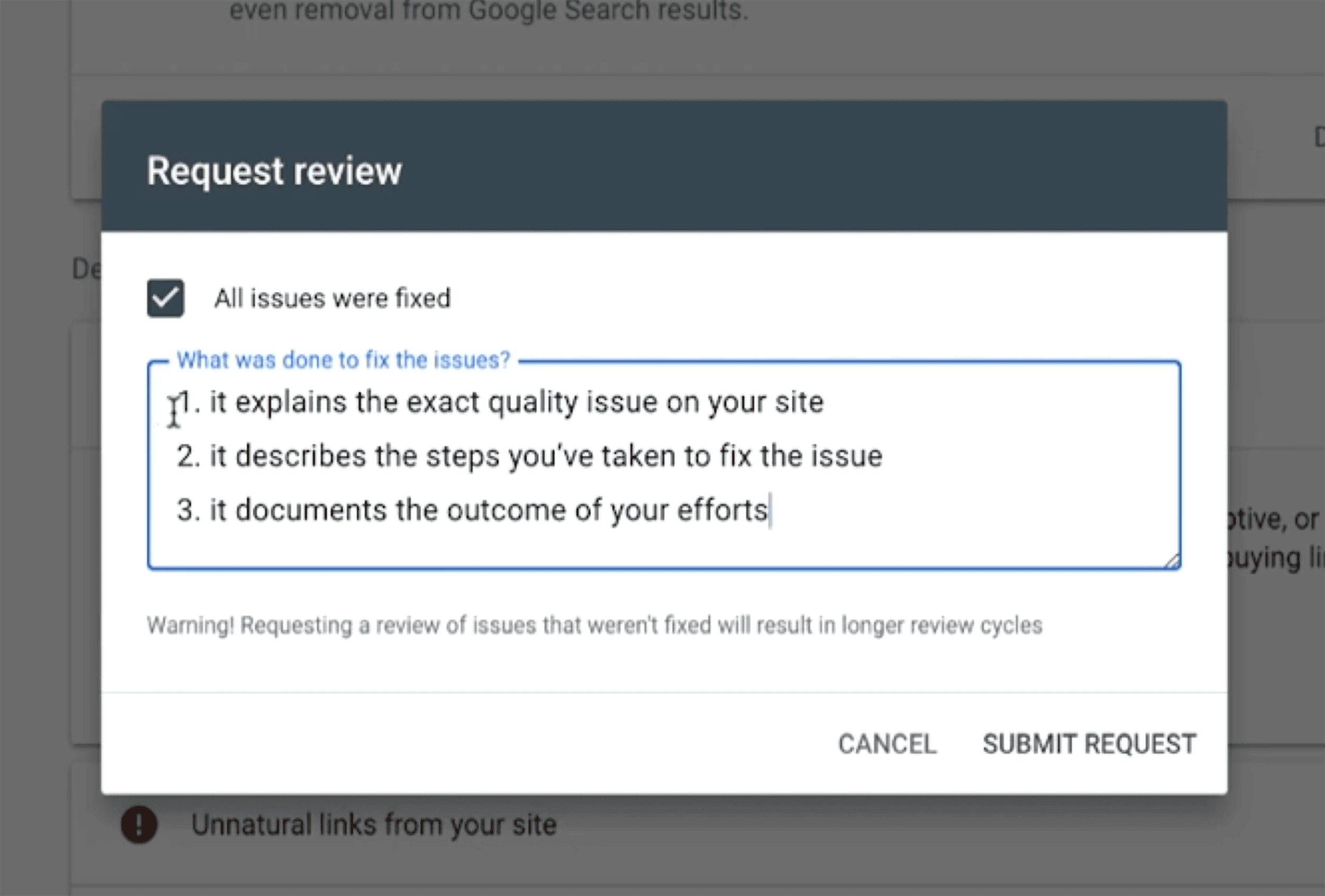
Don’t copy and paste generic language. Be honest, transparent, and direct in your answer.
Explain the following:
What caused the issue The exact steps you took to fix it The outcome of your effortsExpect to wait anywhere from a few days to a few weeks for a response.
You’ll get an email with Google’s decision when the review is complete.
If your first request is denied, you can try again.
Stop Stuffing. Start Optimizing.
Google doesn’t count keywords anymore.
Why should you?
Ranking in 2025 isn’t about gaming the algorithm — it’s about creating content that actually helps people.
So, leave the keyword stuffing to 2005 and focus on what modern readers and search engines want:
Helpful, trustworthy content.
Ready to write content that reads and ranks well?

 Tfoso
Tfoso 































